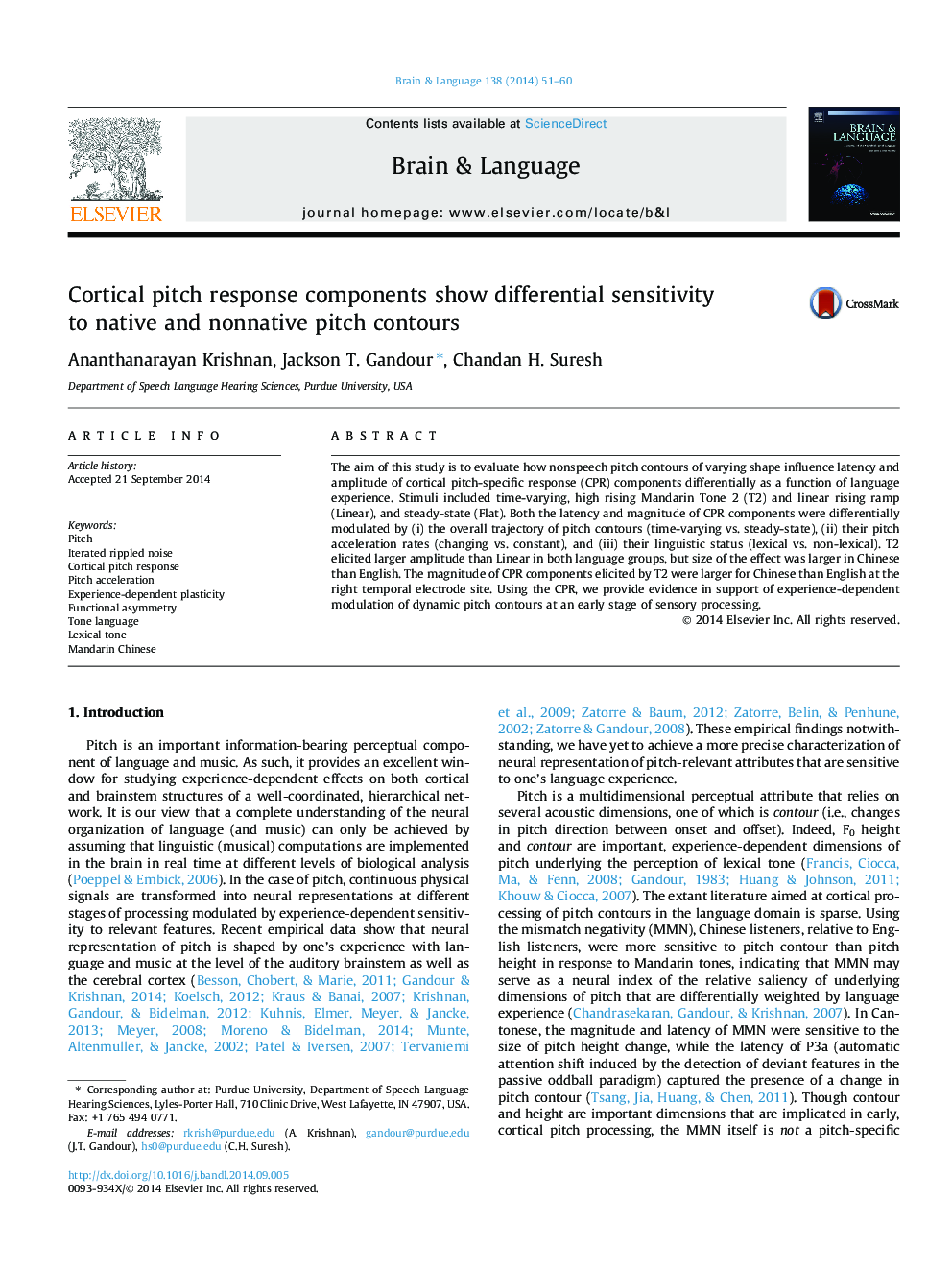| Article ID | Journal | Published Year | Pages | File Type |
|---|---|---|---|---|
| 7284614 | Brain and Language | 2014 | 10 Pages |
Abstract
The aim of this study is to evaluate how nonspeech pitch contours of varying shape influence latency and amplitude of cortical pitch-specific response (CPR) components differentially as a function of language experience. Stimuli included time-varying, high rising Mandarin Tone 2 (T2) and linear rising ramp (Linear), and steady-state (Flat). Both the latency and magnitude of CPR components were differentially modulated by (i) the overall trajectory of pitch contours (time-varying vs. steady-state), (ii) their pitch acceleration rates (changing vs. constant), and (iii) their linguistic status (lexical vs. non-lexical). T2 elicited larger amplitude than Linear in both language groups, but size of the effect was larger in Chinese than English. The magnitude of CPR components elicited by T2 were larger for Chinese than English at the right temporal electrode site. Using the CPR, we provide evidence in support of experience-dependent modulation of dynamic pitch contours at an early stage of sensory processing.
Keywords
Related Topics
Life Sciences
Neuroscience
Biological Psychiatry
Authors
Ananthanarayan Krishnan, Jackson T. Gandour, Chandan H. Suresh,
